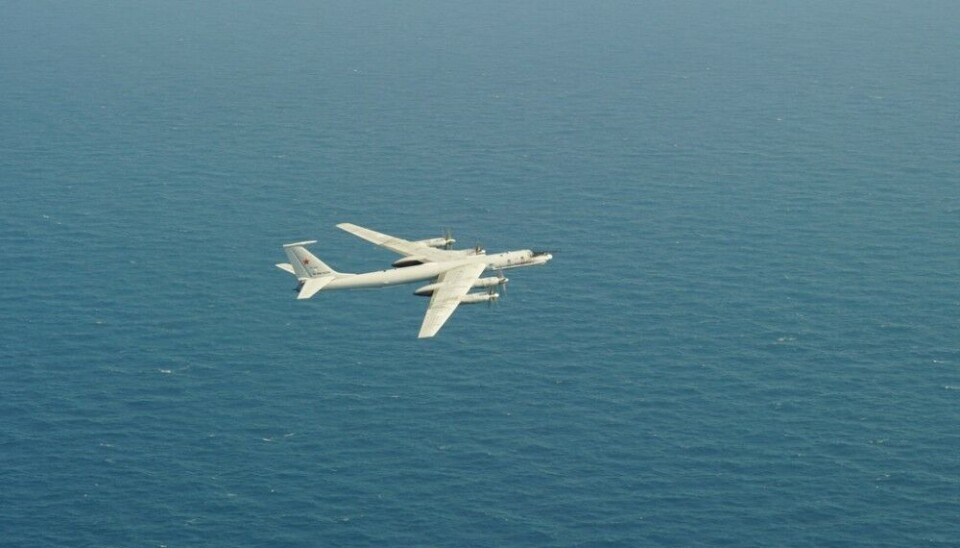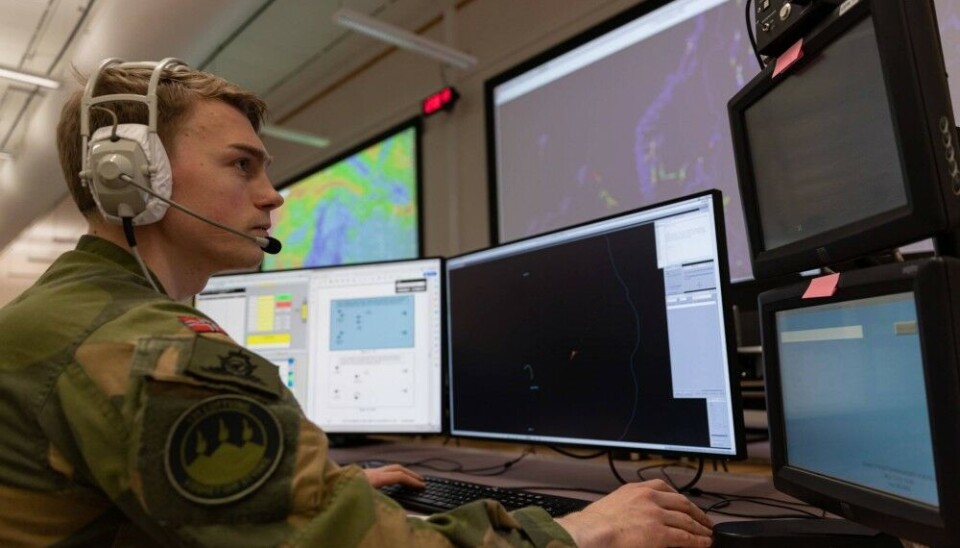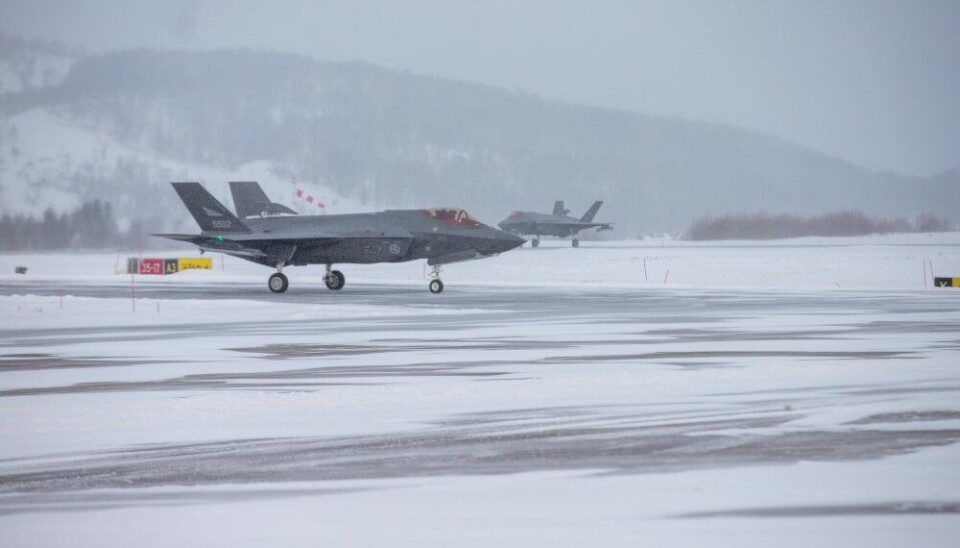
2023 saw more Russian strategic bombers outside Norway
They are Moscow’s most busy cruise missile platforms in the war of aggression against Ukraine, but the Tu-95 and Tu-160 aircraft still found time to increase the number of flights outside Norwegian air space in 2023.
“There has been no decline in overall identifications of strategic bombers in our area of interest,” says head of communications with the Norwegian Air Force, Lt Col Eivind Byre to the Barents Observer.
Nine Tu-160 and Tu-95, code-named Bear and Blackjack by NATO, were identified on flights close to Norway in 2023, Byre says.
That is up from six in 2022, eight in 2021, and four in 2020.
When Russian military aviation is detected by Norway’s Control and Reporting Centre Sørreisa, it is for the Operation Center at Reitan and NATO Headquarters in Uedem, Germany, to decide on whether to scramble fighter jets from Evenes Air Base to fly north to identify the planes.

That typically happens when strategic bombers fly westbound in the Barents Sea together with Russian fighter jets from the Kola Peninsula.
Other Russian military aircraft of interest for the Norwegians could be the Tu-142 maritime surveillance planes, Beriev A-50 early warning and control plane, and Tu-22M bombers.
A few Tu-22M bombers are permanently based at Olenya Air Base south of Murmansk, an airfield that has got lots of attention during the recent year after Russia’s strategic forces re-deployed a fleet of Tu-95 and Tu-160 long-range bombers to the north.
Since late December 2023, these aircraft have played a core role in at least four massive cruise missile attacks on Ukraine as previously reported by the Barents Observer.
Lt Col Byre will not reveal knowledge to the public about from which airports the Russian planes take off when flying missions outside Norway.
The flying time from Olenya Air Base south of Murmansk to the maritime border areas with Norway north of the Varanger fjord is about 15 minutes. Before late 2022, most Russian long-range bombers flying Arctic missions or Western European missions took off from Engels Air Base in the Saratov region further south in Russia.
“There were 32 scrambles in 2023, identifying 59 Russian military planes of all types; strategic bombers, intelligence, fighter jets, tankers and maritime patrol aircraft,” Eivind Byre details.
That is up from 2022 when Norwegian F-35 had 24 scrambles and identified 43 Russian military aircraft.

Russia’s Northern Fleet said in a recent statement that maritime patrol flights over the North Atlantic will be a priority in 2024. Such flights are carried out by Tu-142 planes. Average duration for each flight is about twelve hours and average distance per mission is more than 8,000 kilometers.
The Tu-142 is aimed at tracking NATO submarines and keeping an eye on foreign warships in Russia’s water of interest.
For Norway, priority is given to maintaining situation awareness in the northern areas.
“Russia’s war of aggression against Ukraine makes us heighten vigilance on the northern flank. We have a good situation awareness in our immediate areas, and we follow developments closely,” says Chief of the Norwegian Air Force, Major General Rolf Follan to the Barents Observer.















